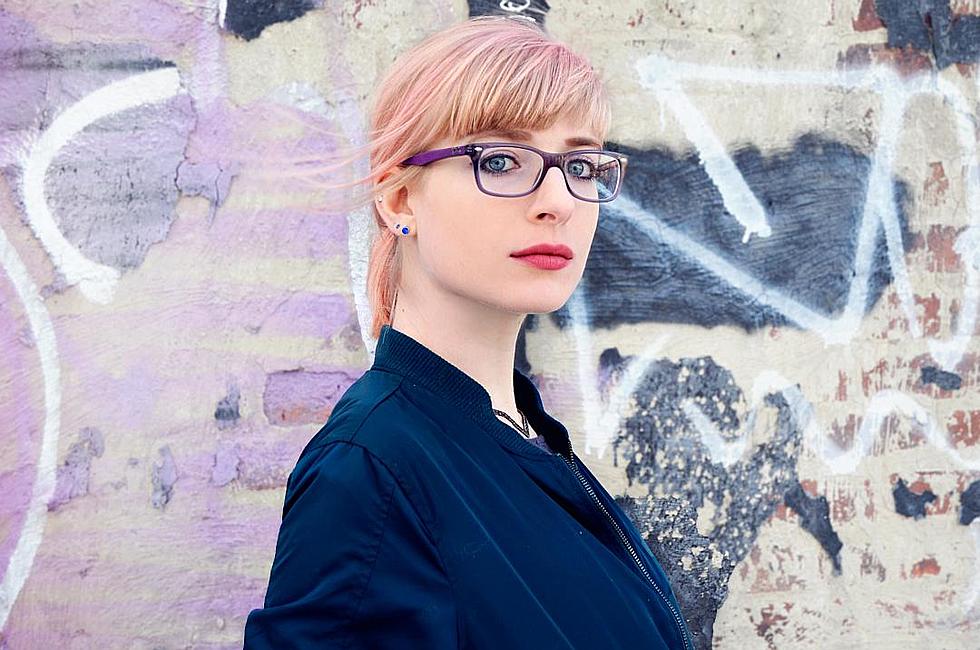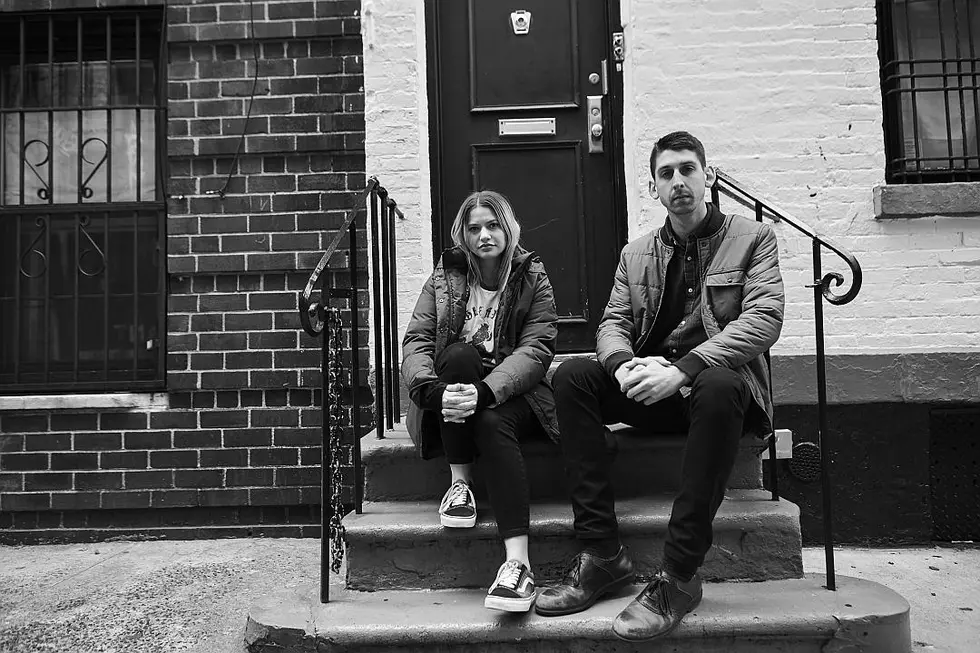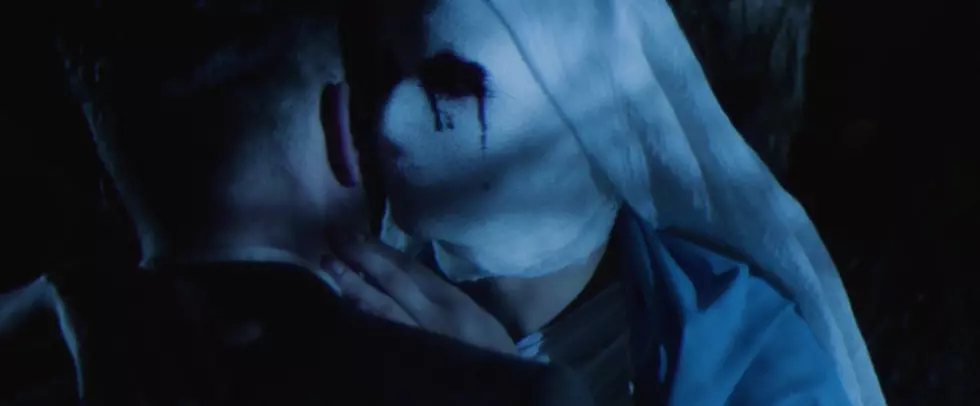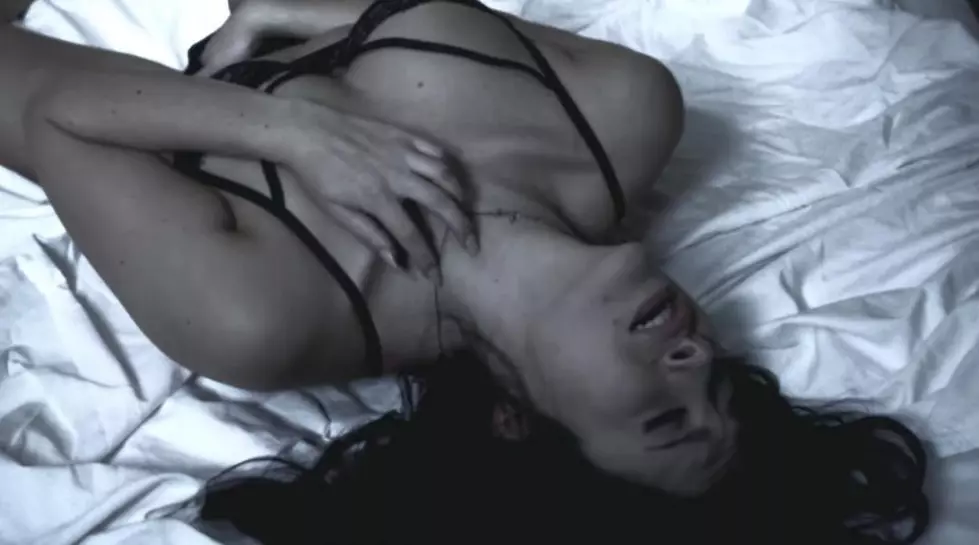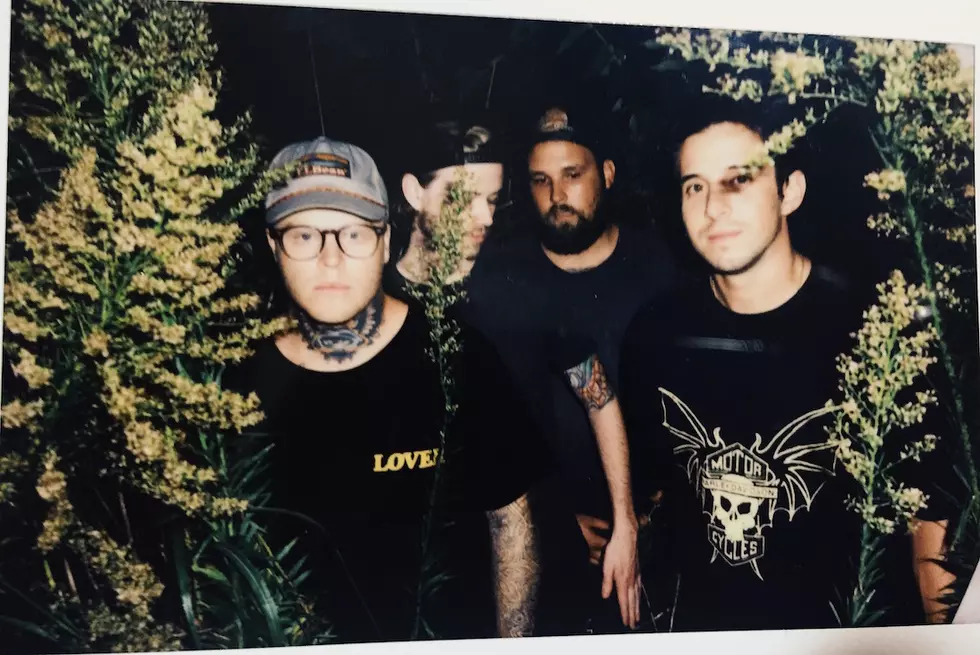
New York Comes Intensely Alive on Evan Caminiti’s ‘Toxic City Music’
Evan Caminiti has been making compelling music from unsettling drones for years now, both as a solo artist and from his time in the duo Barn Owl. In recent years, his music has taken some notable shifts: on 2015’s Meridian, for instance, he eschewed guitars entirely, working instead with synthesizers. For his latest album, Toxic City Music, the guitars are back, but they’ve brought an increased set of sonic space with them.
It’s not the only change for Caminiti. He’s released this album on Dust Editions, his own label, for artistic and creative reasons that came up in our conversation. And he also found himself channeling some of the more intense moods that can come with living in New York into the music on the album. The end result is occasionally harrowing and sometimes transcendent, with a distinctive pull and plenty of texture to go around.
I spoke with Caminiti over the phone about the album’s genesis, the role of collaboration on it and more.
The song “Joaquin” is the only song on Toxic City Music with another musician credited: Jefre Cantu-Ledesma. How did that come about, and what made that particular composition something where someone else was involved?
It really came down to it being what the song needed. There wasn’t any kind of goal to incorporate or not incorporate someone else’s input on any of the tracks. It just ended up in the process of letting these tracks develop, which is a pretty long process because we did it all in my home studio. That, at some point, was one of the elements thrown into the mix. It kind of gelled everything. So, it really just came about through some experimentation, and was in service to the song.
Where do you and Jefre know one another from?
Jefre and I have been good friends for many years. We first met back in San Francisco in 2007 or something, and we’ve done a bit of touring together. We did this really epic tour with 32 shows in 35 days throughout Europe. That kind of experience really cements a bond with someone. So, yeah, we go way back, and he had moved from San Francisco to New York way before I moved from San Francisco to New York. Once I moved out here several years ago, we connected and started playing music together. So, we had all these sessions that we hadn’t really done much with, so I pulled from one of those sessions for “Joaquin.”
Do you think any of the other music from that is going to make its way onto future albums?
That’s a good question. I think we’ve had a lot of back-and-forth with this stuff, and for some reason, it just kind of got sidelined. Anything is possible, but I can’t really say at this point.
Toxic City Music is a pretty bold title. Did you have that going in, or was that something that was more a theme that came to mind as you were working on these songs?
Those words stuck in my head pretty early on once I started working on this record a few years ago. And I wasn’t sure at that point if it was more the philosophy of the record versus the actual title. But I made the conscious decision of grounding it in something concrete, and then going with that as the title, versus leaning towards abstraction the way I have in the past. Thematically, this record is really about engaging with your surroundings and being tapped into your physical surroundings, and the psychic energy in the surroundings. So, yeah, it was directly inspired by New York City in my case, but I think it could be applied to virtually any other modern metropolis.
The middle song on the record is “NYC Ego.” When you think of that phrase, is that more the ego of someone living in New York or the collective ego of the city?
I guess one of the things that’s interesting to me about New York — and I really do love New York City, I love the diversity; I don’t mean to like talk shit on New York City by any means, but it does bring the dog-eat-dog nature of a capitalist system to the surface, where there’s this visceral element of people’s struggle thrust into public life on a daily basis, more than I’ve experienced anywhere else I’ve lived. And I’ve had friends who have said stuff like, “Oh, man, New York City has made me a worse person because I'll have to be so selfish to fight just to make ends meet.” So, it was kind of going off of that. Those were the sort of things I was thinking with the title. Sometimes I think of the title and it also makes me think of Trump, in a way. The front cover of the album was a photo I took at the protest on the first Saturday after he was elected, and so Trump Tower is actually on the cover of the record. I guess in another way he could embody that disgusting, selfish ego.
Was the record finished at the time that you took the front cover? Or did the post-election feeling end up informing more of the creation of it?
It was already finished at that time, and I’d been working with a friend of mine on an alternate cover which was really beautiful [and] minimal. Ultimately, I thought, “I don’t know, I think this record is a little bit too confrontational for this to really make sense.” And it just so happened after toying around with this photo that I felt this ending up being the cover clicked a little bit more.
Where does the title “French Cocoon (Mutagen)” come from? Because that’s one of the other places on the record where there’s a specific space listed, or at least France to some extent.
That came from the fact that I was heavily inspired and influenced by music from Recollection GRM in Paris. The birthplace of musique concrète.
Anything in particular from the label?
Philosophically speaking, I had been listening to a lot of Luc Ferrari and his concepts of anecdotal music where he presented pretty unprocessed field recordings at the GRM. This was kind of controversial at the time because [in addition to] everything else, they had heavily processed all their non-musical sounds. And everything I present on the album is pretty heavily processed in terms of the concrete sounds. From an aesthetic standpoint, just the work that was done at the GRM was really interesting and inspiring to me. And also, from that philosophical standpoint of the anecdotal music, this idea of just immersing a listener in an environment that they may not already be directly in touch with.
What was your process like as far as recording spaces and trying to recreate — or create — kind of a place through music?
Well, I spent sort of an extended amount of time capturing recordings from around New York on my iPhone, and I did a few more field recordings, like recording sounds out of my window within my apartment using more of a proper microphone. But I wouldn’t say that the starting points for the songs were those field recordings per se. There is a pretty heavy amount of processed guitar and synthesizer. And looking back on it, maybe it’s because I’m just still a bit hazy emerging from being sick here, but I can’t really remember how specific things just came together. I will say that I do like to set up a synthesizer patch in my studio and play it like a live instrument rather than meticulously multitracking things. So, it does begin with this live element of something — it begins with improvisation and then tightens itself up. Then there’s a lot of post-production to weave it into something that’s more of a compelling story and moving away from anything that might be indulgent.
How do you go about finding something that you want to record out in an urban landscape? Is it just hearing a sound that interests you? Or is it more finding a place and sort of turning the recorder on and seeing what happens?
Yeah, I’ll usually hear something that kind of perks my ears up and rush to pull my phone out to try to record it before it’s too late. Just something that like has an interesting timbral quality.
Do you find that there’s one part of the city where you found more interesting things to record?
I live in a pretty industrial neighborhood, so my surroundings and a lot of the walks I’ll take on a daily basis are by a lot of factories and warehouses. So, there were some sounds from that, and construction sites. But then also I think there’s a pretty good amount of sounds on the record from the subway. One thing that really influenced me is — I have a day job, and just the whole rush hour commute factor where it brings out the worst in people, and people turn really vicious on a packed, crowded train. I used that kind of element. So, I think there are some voices and some other train track sounds that are kind of submerged within some of the tracks.
It’s always fascinating to me when I’ll be waiting for the subway or I’ll hear the subway and sort of ... the rhythm made by a train going, and the way that that sound has this very percussive quality to it.
There’s part of me where I think, “Oh, Chris Watson really exhausted that whole, like, basing an album around a train.” It’s called El Tren Fantasma. So, that’s like a really interesting kind of older Chris Watson piece [that] I think Touch released in the early 2000s or something. He makes really great use of what you’re talking about, that rhythmic quality of the train. I didn’t want to try to revisit it so much, but I do enjoy that sound and I feel like there’s a lot of potential with it.
When did you decide to release this record on your own label? And when did you start the label? Because this isn’t the first release on your label.
It’s been something I’ve wanted to work on more, but for a variety of reasons, it wasn’t really feasible until now. The decision was really reaching a point to symbolically differentiate it from some of my past stuff and have a symbolic sort of fresh start.
So, even within your own body of work, you kind of view this as being a differentiation point from the work that’s come before?
I’ve just been trying to work on developing my own process and sound, and a lot of the stuff that I released years ago, like a lot of the Barn Owl stuff, we basically were just like college students. Now I feel more like I know really what I want to hear, and I’m trying to make something that’s more for myself and kind of move on with trying to distance things a little bit from the past stuff.
Did you find yourself working with the guitar in a different way for this record?
It was more of a sound source, a starting point for something to then process electronically. Just as a way of having this rich sound that was a starting point. It kind of spices things up in terms of working with, like, purely electronic music to have something that originates with, you know, the metal strings vibrating on a piece of wood. So, just in terms of the texture, it kind of added a lot and just threw some weird, interesting variables into the process where it would never necessarily go the same way. In general, I would take snippets of the strum of the guitar and pretty heavily process the tape and/or synthesizers to just kind of weave it into everything else.
In terms of working with all of these different elements where you’re processing it, how does that translate into the live setting for you?
I kind of road-tested it last Friday for a record release show in New York City, and so, for that show and for Montreal, I basically worked with samples of the guitar, for lack of a better term. These samples are then processed live. I like to play with hardware, so I thought for a second I might need to start playing with the laptop to be able to do stuff on this record live. But utilizing some of these synthesizers with sampling capabilities, it’s really easy to integrate that guitar into the synthesizer setup.
Has working on this record changed your relationship to New York City at all?
I guess I would say it’s abstract and I don’t really understand it, but there’s something about taking inspiration from these things like intense commutes and putting them into a piece of music where it’s a way of processing the feelings of anxiety that I get from it and somehow trying to translate that anxiety into something more positive. However convoluted and abstract that may be, I feel like in some way that might be helpful.
Do you still feel that same anxiety once you’ve made that composition?
The main distinction is, in the case of, like, the train sounds in the subway, when you focus in on the train as a listener and you’re in tune with the surroundings, you’re actively listening; for me, at least, it helps to find little beautiful beats within a mundane or city situation. There are analogues with Pauline Oliveros and her idea of deep listening, finding those harmonics and those subtle overtones within the music — that idea of listening deeper and engaging with something, and coming out with this hidden feel of things that may not be apparent to you unless you really do concentrate on it. That level of concentration has a payoff for you. You can find beauty within these things where it may not have at first been apparent.
More From CLRVYNT
